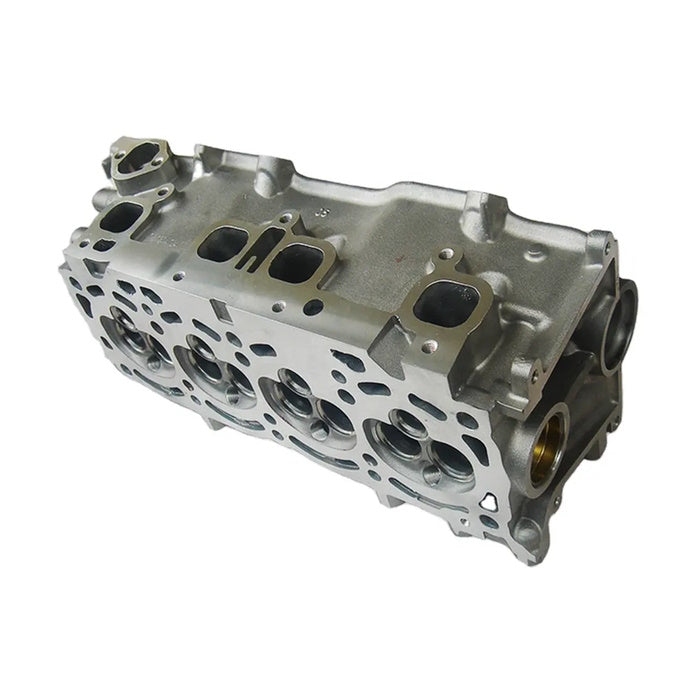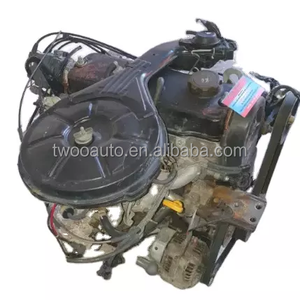Discover the current Trends in Engine Innovation With Tazz
In the rapidly evolving landscape of auto modern technology, Tazz stands at the leading edge, highlighting considerable advancements in engine systems that focus on both advancement and sustainability. From hybrid engines that optimize gas effectiveness to the development of hydrogen gas cells, the patterns shaping modern-day powertrains are not just enhancing efficiency however also resolving important environmental obstacles.
Crossbreed Engine Innovations
Hybrid engine technologies represent a pivotal change in automobile modern technology, integrating the benefits of interior combustion engines with electrical propulsion systems. This integration not just enhances gas efficiency however additionally decreases exhausts, meeting significantly strict ecological policies. By making use of both energy resources, hybrid engines can optimize performance, supplying power when needed while saving fuel during much less demanding driving problems.
Recent improvements in crossbreed technology consist of renovations in battery effectiveness and regenerative stopping systems. These innovations enable higher power recuperation throughout slowdown, which can be rerouted to help in acceleration or power auxiliary systems. Makers are focusing on light-weight products and compact styles to optimize the performance of crossbreed powertrains.
The development of plug-in hybrids has additionally increased the marketplace, enabling drivers to charge their automobiles making use of common electric outlets. This function often permits for significant all-electric variety, additional decreasing reliance on conventional gas. tazz. As the automotive market remains to progress, hybrid engine technologies are expected to play a vital function in connecting the space in between traditional lorries and completely electric versions, providing a transitional service that provides to varied consumer requirements and choices
Developments in Electric Powertrains
The auto landscape is swiftly developing, with electrical powertrains arising as a leading force in lasting transportation. Developments in electric vehicle (EV) technology are dramatically improving effectiveness, efficiency, and user experience. Key advancements include enhancements in battery chemistry, which have actually increased power thickness, lowered billing times, and extended general battery life.
Solid-state batteries, as an example, guarantee to revolutionize the market by giving better safety and security and efficiency compared to typical lithium-ion cells. Advancements in regenerative stopping systems are allowing vehicles to recoup power during slowdown, adding to total efficiency.
Along with battery innovation, electric motor layouts are ending up being extra innovative. Developments such as incorporated motors and progressed thermal monitoring systems are helping to optimize power shipment and reduce weight, ultimately improving lorry characteristics.

Collectively, these advances emphasize the dedication to change in the direction of cleaner, a lot more effective transportation solutions, positioning electrical powertrains at the leading edge of vehicle development.
The Rise of Hydrogen Fuel Cells
Significantly, hydrogen gas cells are getting traction as a viable choice to typical interior burning engines and battery electrical automobiles. This innovation harnesses the chemical power kept in hydrogen, converting it right into power with an electrochemical reaction with oxygen. The key by-product of this process is water, making hydrogen gas cells an eco-friendly option with no discharges at the tailpipe.

Car manufacturers are increasingly buying hydrogen fuel cell innovation, identifying its possibility for long-range applications and rapid refueling capabilities that match traditional gas. In addition, fields such as heavy-duty transport and public transit are particularly appropriate for hydrogen fuel cells, where battery electric services may fall short because of weight and variety restrictions.
As study and financial investment proceed to broaden, hydrogen gas cells are positioned to play a considerable function in the future landscape of clean transportation and energy services.
Enhancements in Internal Combustion Engines
Developments in internal combustion engine (ICE) technology are transforming traditional vehicles to fulfill modern-day ecological requirements and performance expectations. One of one of the most substantial improvements includes the combination of advanced gas shot systems. These systems enhance the air-fuel mix, improving combustion performance and leading to decreased emissions. Straight gas injection, as an example, permits far better atomization of fuel, leading to even more full combustion and enhanced power result.
Additionally, turbocharging has actually acquired prestige, enabling smaller sized engines to provide greater performance without the weight of bigger engines - tazz. This innovation not just increases efficiency however additionally contributes to decrease fuel intake. Variable valve timing systems are additionally being fine-tuned, making it possible for engines to adapt to numerous driving conditions for boosted torque and responsiveness
Moreover, making use of lightweight materials in engine construction is coming to be standard, further improving fuel effectiveness by lowering total car weight. Engine control devices (ECUs) are progressively advanced, allowing real-time modifications that maximize efficiency and emissions.
These improvements collectively indicate a crucial shift in ICE innovation, aligning view with global sustainability objectives while still giving the efficiency drivers anticipate from their cars. As the market advances, these enhancements remain to shape the future of conventional auto engineering.
Future Patterns in Engine Performance
Substantial advancements in engine effectiveness are prepared for as producers concentrate on integrating innovative innovations to satisfy rigid ecological guidelines and customer needs. The change in the direction of electrification, crossbreed systems, and alternate gas is reshaping the vehicle landscape, driving advancements that improve gas economic climate and minimize discharges.
One of the crucial patterns is the application of advanced materials and manufacturing techniques. High-strength alloys and light-weight compounds add to decreased car weight, thus improving overall performance. In addition, the adoption of turbocharging and variable valve timing technologies enables boosted power outcome from smaller engines, check that further boosting gas economic climate.

Verdict
Advancements in crossbreed engine systems, electrical powertrains, and hydrogen fuel cells demonstrate a dedication to lowering emissions while improving performance. Enhancements in inner burning engines and an emphasis on lightweight materials contribute to overall engine effectiveness.
From crossbreed engines that maximize fuel effectiveness to the development of hydrogen gas cells, the patterns forming modern-day powertrains are not just boosting efficiency yet also addressing vital ecological obstacles.Crossbreed engine advancements stand my company for an essential change in vehicle innovation, integrating the benefits of interior combustion engines with electric propulsion systems.Additionally, turbocharging has actually obtained prestige, enabling smaller engines to deliver higher efficiency without the weight of bigger engines. In addition, the fostering of turbocharging and variable valve timing technologies allows for boosted power result from smaller engines, even more enhancing gas economic situation.
Enhancements in interior combustion engines and an emphasis on light-weight materials add to total engine effectiveness.